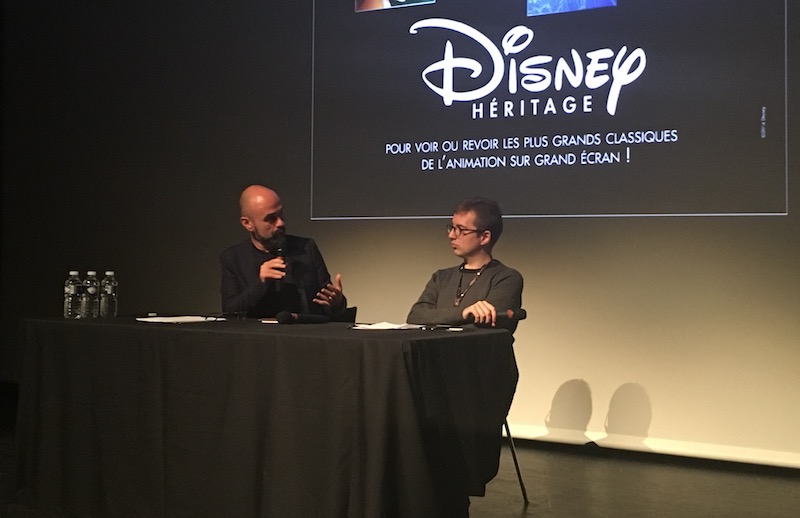Animated cinema session: "There is still a way to tell the beautiful story of the animation"
This Wednesday morning began with a session around heritage animated cinema co-organized by the Annecy Festival and the Institut Lumière.

Introduced by Nicolas Thys, Jean-Baptiste Garnero, in charge of the valuation of CNC collections, resumed the visibility of heritage animation cinema which, before the years 2000-2010, apart from Disney, was particularly limited to cinematheques and retrospectives. At first, a "nitrate plan", organized by the Center, helped to save some of these films before the true "Copernican revolution" of digitization. From 2012, the CNC has launched a major digitization plan in 2K and 4K in order to perpetuate the distribution of films. But among all the 700 digitized works for a total budget of € 55 million, there were only one feature film, La planète interdite by René Laloux, and about thirty short films of animation, or 2% of the supported restorations. An opportunity for Jean-Baptiste Garnero to appeal to rights holders, often small structures or even individuals, to offer their films by 2019 (until the announced end of these aids).
In addition, the researcher reminded that in Bois D'Arcy, where nearly 110,000 artworks are conserved by the CNC, restorations are also made internally. And especially spme animation with notably the work of Alexander Alexeieff or Peter Foldes. The goal of the Center is to revive these known but invisible authors, so far for concerns of rights-holders or restoration, to be able to bring them up to a broadcast.
Following the CNC, it was Marco de Blois, programmer-curator and animator of the Cinémathèque du Québec, who took the floor. The man pointed out that this cinematheque specifically had developed a specialization of diffusion and conservation of the international animation cinema. Especially since a world retrospective of animated cinema held in 1967. At present, it works on two projects in particular, two films considered missing so far. Marco de Blois, backed up by a well-documented presentation in pictures, recounted the restoration stages of Gertie's dinosaur, Windsor McCay's 1914 film. But while the version from the end of 1914 still exists, the one from the beginning of that year, presented as part of a performance on stage, had completely disappeared. The aim of the Cinémathèque? Build a final version of the original movie used by McCay and incorporate it into a show and introduce it to a new audience. Finally, he presented 40 seconds of Norman McLaren's Hen Hop, a premiere in front of an audience outside Quebec.
Sylvie Brévignon, C.O.O at Anime Ltd, then expanded on the case of Japanese animation. The opportunity for her to explain that the country had no tradition of preservation and that to find material, or even the rights-holders, for a film remained a Dantesque initiative. It is particularly difficult to access a film from before the 90s. And to tell the story of Ghost in the Shell that she distributed. A search that took her two years for a film released in 1994. "I did a job of archivist and restoration, as if it had become the role of France to preserve Japanese cinema" she explains, adding that she would be surprised to see the country change its attitude towards the conservation of its works. Outside Ghibli, which is an exception locally.
Moreover, the films of the company of Hayao Miyazaki are distributed in France by Disney. And it is logically that Frederic Monnereau, director Distribution Cinema and Marketing of the company with big ears, took the continuation of Sylvie Brévignon. The opportunity for him to recall the almost hegemony which enjoyed Disney until the 1990s. A great power that allowed him, especially at the time of VHS, to re-release his classics regularly "to reach all generations." In the digital age, the company has changed its strategy and created in 2012 the Disney Heritage label in which all their films are digitized since Snow White. The idea? A great flexibility, creating events but also helping, from a marketing point of view, the exhibitors by putting equipment at their disposal.
Finally Jean-Paul Commin, author of Kirikou and after twenty years of animation in France, came to introduce his book in conclusion while encouraging good wills to "tell the beautiful story of animation" highlighting initiatives like the Afca or the Afcae young public label.




